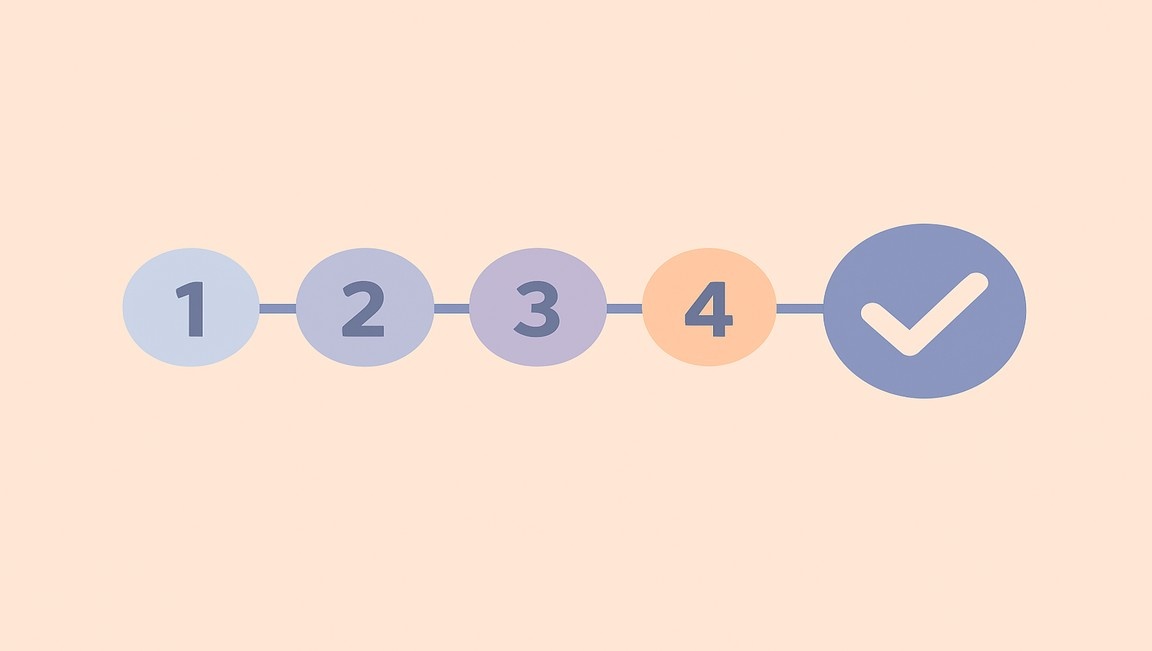Table of content
SHARE THIS ARTICLE
Is this blog hitting the mark?
Contact Us
Table of Contents
- The New QA Reality: Why Traditional Approaches Fall Short
- AI-Driven Testing: The Intelligence Revolution
- Shift-Left Testing: Building Quality from Day One
- Implementation Roadmap for QA Managers
- Conclusion: The Path Forward
The software landscape has undergone a seismic shift toward microservices architectures, API-first designs, and containerized deployments. While these approaches deliver unprecedented scalability and agility, they've fundamentally transformed quality assurance challenges. Traditional testing methodologies—designed for monolithic applications—simply cannot keep pace with the complexity, speed, and distributed nature of modern systems.
For QA managers navigating this transformation, the question isn't whether to evolve your testing strategy, but how quickly you can implement future-proof approaches that ensure quality at the speed of DevOps. The stakes are clear: organizations with mature QA automation practices experience 70% faster testing cycles and reduce post-deployment defects by up to 80%.
Future-Proof QA Strategy Components for Microservices, APIs, and Containerized Applications
The New QA Reality: Why Traditional Approaches Fall Short
The Microservices Testing Challenge
Microservices architecture breaks monolithic applications into dozens or hundreds of independently deployable services. Each service has its own development lifecycle, technology stack, and deployment schedule. This creates a combinatorial explosion of testing scenarios:
- Service interdependencies: A single user transaction may traverse 10-15 microservices
- Version compatibility: Services evolve independently, creating integration challenges
- Distributed failure modes: Network latency, service unavailability, and cascading failures become the norm
- Test environment complexity: Reproducing production-like environments requires orchestrating multiple services
Netflix, a pioneer in microservices testing, identified these challenges early in their architecture transformation. Their solution involved creating comprehensive chaos engineering practices that intentionally inject failures to test system resilience.
API-First Development Demands
Modern applications are increasingly API-first, with 85% of enterprise integrations relying on REST APIs. This shift demands fundamentally different testing approaches:
- Contract validation: Ensuring API providers meet consumer expectations
- Security testing: APIs expose attack surfaces that require specialized security validation
- Performance at scale: APIs must handle thousands of concurrent requests
- Versioning strategies: Maintaining backward compatibility while evolving functionality
Container and Orchestration Complexity
Containerized applications running on platforms like Kubernetes introduce additional testing dimensions:
- Container lifecycle management: Testing startup, scaling, and termination scenarios
- Resource constraints: Validating behavior under CPU and memory limits
- Network policies: Testing service-to-service communication in dynamic environments
- Multi-environment portability: Ensuring consistent behavior across development, staging, and production
AI-Driven Testing: The Intelligence Revolution
Self-Healing Test Automation
The most significant advancement in QA automation is AI-powered self-healing capabilities. Traditional test scripts break when UI elements change, requiring constant maintenance. AI-driven tools like Testim.io and TestRigor automatically adapt to application changes:
Key Capabilities:
- Dynamic element recognition: AI identifies UI elements based on multiple attributes, not just static selectors
- Automatic script repair: When tests fail due to UI changes, AI analyzes the failure and suggests repairs
- Intelligent test generation: AI creates comprehensive test scenarios by analyzing application behavior
Predictive Quality Analytics
Machine learning algorithms analyze historical defect data, code changes, and testing patterns to predict high-risk areas:
- Risk-based test prioritization: Focus testing efforts on components most likely to contain defects
- Defect prediction: Identify potential failure points before they reach production
- Test impact analysis: Determine which tests to run based on code changes
Financial services companies like JPMorgan Chase have implemented AI-driven testing that processes thousands of compliance documents in seconds—a task that previously required months.
Shift-Left Testing: Building Quality from Day One
Early Integration in Development
Shift-left testing moves quality assurance activities earlier in the development lifecycle. For microservices architectures, this means:
Unit Testing Excellence:
- Each microservice must have comprehensive unit test coverage
- Tests run automatically on every code commit
- Mock external dependencies to enable isolated testing
Static Analysis Integration:
- Code quality checks, security vulnerability scans, and compliance validation happen at commit time
- Tools like SonarQube integrate directly into development environments
- Developers receive immediate feedback on code quality issues
Continuous Testing in CI/CD Pipelines
Modern development teams deploy multiple times per day. Quality gates must operate at this velocity without becoming bottlenecks[16][17][18]:
Automated Test Orchestration:
- Unit tests execute on every commit
- Integration tests run on feature branch merges
- Performance and security tests execute in staging environments
- All tests provide results within minutes, not hours
Environment Automation:
- Test environments spin up automatically using Infrastructure as Code
- Database seeds and test data provisioning happen programmatically
- Environments tear down after testing to optimize costs
Contract Testing: Ensuring Microservices Compatibility
Consumer-Driven Contract Validation
Contract testing addresses the fundamental challenge of microservices integration: ensuring services can communicate effectively despite independent development cycles.
How Contract Testing Works:
- Consumer defines expectations: The service consuming an API specifies exactly what it expects from the provider
- Contract generation: These expectations become a formal contract
- Provider validation: The API provider runs tests to ensure they can fulfill the contract
- Independent evolution: Both services can evolve as long as contracts remain valid
Popular Tools:
- Pact: The industry standard for consumer-driven contract testing
- Spring Cloud Contract: Integrated solution for Spring-based microservices
- HyperTest: Emerging AI-powered contract testing platform
API Compatibility Assurance
Contract testing prevents the most common microservices failure mode: incompatible API changes breaking downstream services[20]:
- Schema validation: Ensure response formats remain consistent
- Backward compatibility: Validate that API changes don't break existing consumers
- Version management: Support multiple API versions during transition periods
- Service Virtualization: Testing Without Dependencies
Eliminating External Dependencies
Service virtualization creates realistic simulations of external systems, enabling comprehensive testing even when dependencies are unavailable, unstable, or expensive to access.
Key Benefits:
- Parallel development: Teams can test against simulated services before actual services are ready
- Cost reduction: Eliminate expensive third-party service calls during testing
- Consistent environments: Virtual services provide predictable responses for repeatable testing
- Edge case simulation: Test error conditions and unusual scenarios difficult to reproduce with real services
Leading Tools:
- Parasoft Virtualize: Comprehensive enterprise service virtualization platform
- WireMock: Open-source HTTP service stubbing tool
- Speedscale: Traffic capture and replay for realistic API simulation
Microservices Isolation Testing
Virtual services enable testing individual microservices in complete isolation:
- Unit-level service testing: Test business logic without external dependencies
- Performance validation: Measure service performance without network variability
- Security testing: Validate authentication and authorization in controlled environments
- Chaos Engineering: Building Antifragile Systems
Proactive Resilience Testing
Chaos engineering intentionally introduces failures into systems to test their resilience. This practice, pioneered by Netflix, has become essential for distributed systems:
Netflix's Chaos Engineering Arsenal:
- Chaos Monkey: Randomly terminates service instances
- Chaos Kong: Simulates entire data center failures
- Latency Monkey: Introduces network delays
- Security Monkey: Tests security compliance
Production Environment Testing
Unlike traditional testing that occurs in isolated environments, chaos engineering often runs in production to ensure realistic conditions[5][6]:
Controlled Experiments:
- Define steady-state metrics: Establish baseline system behavior
- Hypothesize about weaknesses: Predict how the system might fail
- Introduce controlled failures: Execute experiments with limited blast radius
- Measure and analyze: Compare actual behavior to predictions
- Improve resilience: Address discovered weaknesses
Advanced Monitoring and Observability
The Three Pillars of Observability
Modern containerized applications require comprehensive observability combining metrics, logs, and traces:
Metrics: Quantitative measurements of system behavior
- Container resource utilization (CPU, memory, network)
- Application performance indicators (response time, throughput)
- Business metrics (user registrations, transactions)
Logs: Detailed event records providing context
- Application logs with structured formatting
- Container lifecycle events
- Security audit trails
Traces: Request flow visualization across distributed services
- End-to-end transaction tracking
- Service dependency mapping
- Performance bottleneck identification
Also Read: How We Catch the More Bugs At QAble
AI-Powered Anomaly Detection
Traditional monitoring relies on static thresholds that generate false positives. AI-powered observability platforms learn normal system behavior and detect meaningful anomalies:
- Dynamic baselines: Understand normal performance patterns including seasonal variations
- Correlation analysis: Identify relationships between different metrics and events
- Root cause analysis: Automatically suggest likely causes of performance degradations
Container-Specific Monitoring Challenges
Containerized environments create unique observability requirements:
- Ephemeral nature: Containers start and stop frequently, making historical analysis challenging
- Resource sharing: Multiple containers share underlying infrastructure resources
- Orchestration complexity: Kubernetes introduces additional layers of abstraction
- Service discovery: Dynamic service locations require intelligent routing and monitoring
Best Practices:
- Comprehensive instrumentation: Monitor containers, applications, and infrastructure
- Unified correlation: Connect container metrics to application performance
- Automated alerting: Focus on actionable alerts that indicate real issues
- Cost optimization: Balance observability depth with storage and processing costs
Implementation Roadmap for QA Managers
Phase 1: Foundation Building (Months 1-3)
Establish CI/CD Integration:
- Implement automated testing in all development pipelines
- Create standardized test environments using containers
- Establish quality gates that prevent defective code from advancing
Tool Evaluation and Selection:
- Assess current testing tools for microservices compatibility
- Pilot AI-driven testing tools for self-healing capabilities
- Select observability platform for comprehensive monitoring
Phase 2: Advanced Practices (Months 4-6)
Contract Testing Implementation:
- Identify critical service-to-service integrations
- Implement consumer-driven contract testing for high-risk APIs
- Establish contract versioning and validation processes
Service Virtualization Deployment:
- Create virtual services for expensive or unstable dependencies
- Enable parallel development through dependency simulation
- Implement chaos engineering practices in staging environments
Phase 3: Production Excellence (Months 7-12)
Chaos Engineering Maturity:
- Implement controlled chaos experiments in production
- Develop runbooks for common failure scenarios
- Create automated recovery mechanisms for known failure modes
Advanced Observability:
- Deploy comprehensive monitoring across all environments
- Implement AI-powered anomaly detection
- Establish SLO-based alerting and incident response
Measuring Success: Key Performance Indicators
Quality Velocity Metrics
- Test execution speed: Time from code commit to test completion
- Test maintenance overhead: Percentage of testing effort spent on test maintenance vs. new test creation
- Defect detection rate: Percentage of bugs caught before production deployment
- Mean time to detection (MTTD): Average time to identify production issues
Business Impact Metrics
- Deployment frequency: Number of production deployments per day/week
- Change failure rate: Percentage of deployments that cause production incidents
- Mean time to recovery (MTTR): Average time to restore service after incidents
- Customer satisfaction: User experience metrics and support ticket trends
Cost Optimization Metrics
- Test environment costs: Infrastructure expenses for testing environments
- Testing team productivity: Test cases created and maintained per team member
- Automation ROI: Cost savings from automated vs. manual testing
- Production incident costs: Business impact of quality-related outages
Conclusion: The Path Forward
The future of QA lies not in simply adopting individual tools, but in creating integrated ecosystems where AI-driven automation, shift-left practices, contract testing, service virtualization, chaos engineering, and comprehensive observability work together seamlessly.
QA managers who successfully navigate this transformation will deliver:
- Faster time-to-market through automated quality gates
- Higher software reliability through proactive resilience testing
- Reduced operational costs through efficient testing practices
- Improved team productivity through intelligent automation
The organizations that thrive in the microservices era will be those that treat quality assurance not as a final checkpoint, but as a continuous intelligence system embedded throughout the entire software development lifecycle. The question isn't whether your QA strategy needs to evolve—it's how quickly you can implement these future-proof practices to stay competitive in an increasingly digital world.
The future of QA is here. The only question is: Are you ready to embrace it?
Discover More About QA Services
sales@qable.ioDelve deeper into the world of quality assurance (QA) services tailored to your industry needs. Have questions? We're here to listen and provide expert insights


Viral Patel is the Co-founder of QAble, delivering advanced test automation solutions with a focus on quality and speed. He specializes in modern frameworks like Playwright, Selenium, and Appium, helping teams accelerate testing and ensure flawless application performance.
.svg)














.webp)
.webp)
.png)
.png)











.png)



.png)

.png)

.png)



















.webp)

